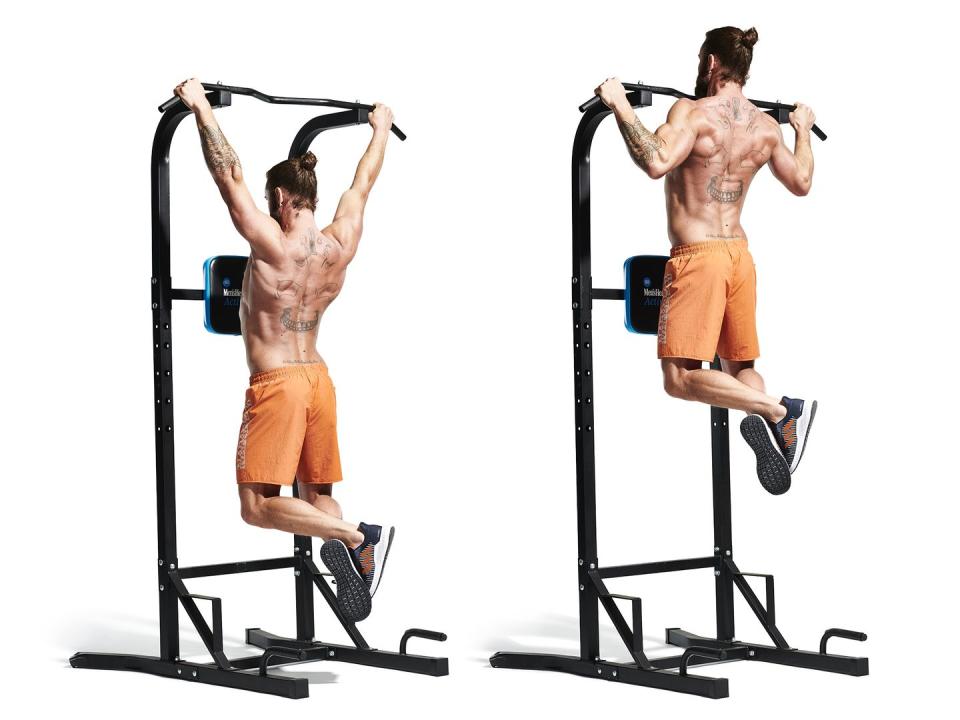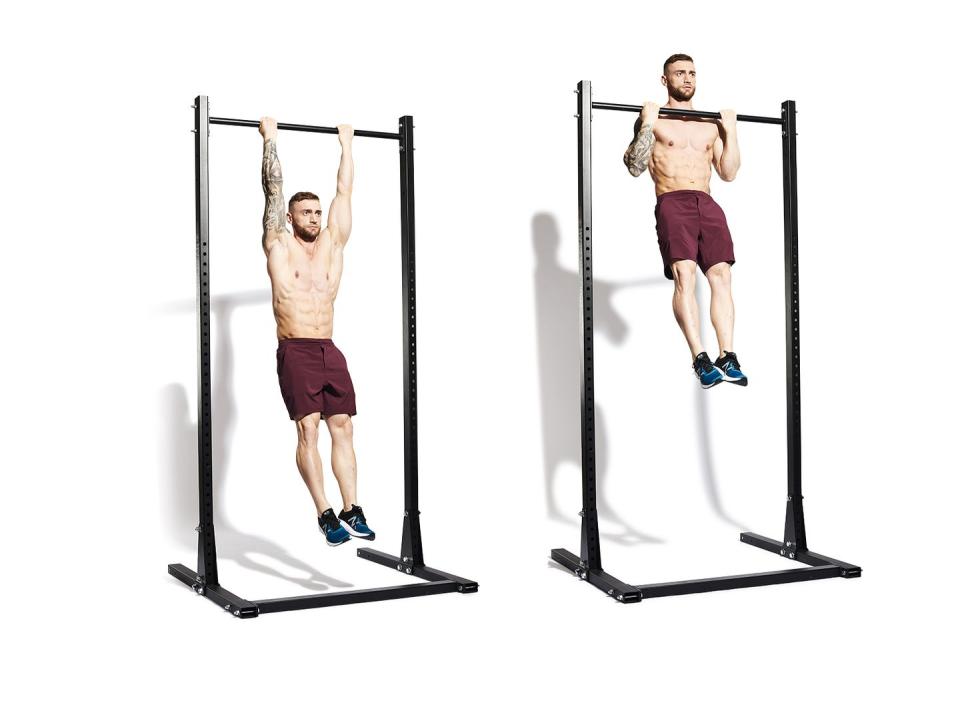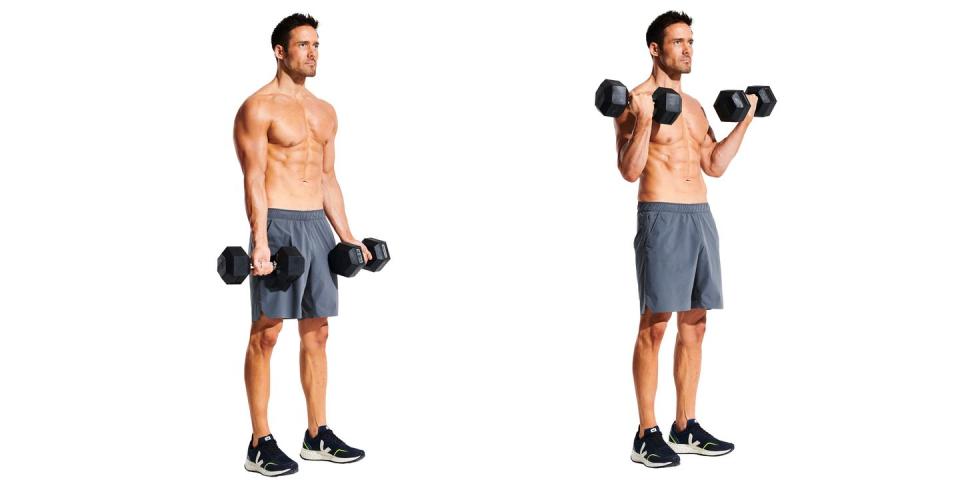Hit Your Back and Biceps with This High Intensity AMRAP Workout

In modern training circles, we don’t tend to talk about the body in terms of individual muscles, instead preferring much more highbrow terms that focus on things like movement patterns or intended stimulus. So you could call this a ‘high-volume pull-focussed hypertrophy’ session, if you like. OR, you could go old school, and call it a back and biceps workout.
Terminology aside, this session delivers a high intensity kick, challenging you to push beyond failure, clocking up plenty of high intensity volume in the process.
Let’s get to work.
High Intensity Back and Biceps Workout
You’re going to be working using the rest/pause technique with an AMRAP format. This is just jargon for, ‘You’re going to work until the timer says stop, and you’re going to complete all reps of a movement before moving on. Even if this means hitting failure, taking a short break and getting stuck back in’.
After a warm-up set a countdown timer for 30 minutes and get to work. Pick weights that allow you to hit the prescribed reps of the below circuit with 2-3 reps still left in the tank. As you complete round after round, you should find yourself struggling to hit your target. This is what we want. Once you hit failure on a movement, stop, take 5-10 deep breaths, and jump straight back in. Keep chipping away until you’ve hit your target reps, then move on. This type of ‘beyond failure’ training will ensure you’re working at a high-intensity, forcing your body (with adequate recovery and nutrition) to adapt and grow.
Complete as many rounds as possible in the 30 minutes, keeping your form tight throughout. Aim to complete more rounds on your next attempt, opting for heavier weights once you can comfortably add 2-3 more rounds to your original score.
1.Pull-Ups x 3

Grasp a pull-up bar with an overhand grip, hands slightly over shoulder-width apart. Lift your feet from the ground and hang freely (A). Pull yourself up by flexing your elbows and pulling your shoulder blades down and back. Think of driving your elbows down into your pockets. When your chin passes the bar, pause (B) before lowering slowly to the starting position. Try to avoid excessive swinging.
2. Chin-Ups x 6

Drop down and switch your grip so that your palms are facing your body. Lift your feet off the floor and hang freely with straight arms (A). Pull yourself up by pulling your elbows down and back, towards your pockets. When your chin passes the bar, pause, squeezing your biceps hard (B) before lowering to the starting position. Move from a dead hang to fully above the bar on each rep, try to avoid excessive swinging or kipping.
3. Three Point Row x 9 (each side)

Hold a heavy dumbbell in your left arm and hinge at the hips, placing your right hand onto a bench or box (A). With a flat back and rigid core, shift your weight onto your right hand and row the right dumbbell up into your hip (B). Pause briefly, then lower the weight under control until your arm is straight. Perform prescribed reps on one side, then switch and repeat with the opposite arm.
4. Standing Dumbbell Curl x 12

Stand tall holding a pair of lighter dumbbells at your sides (A). With minimal momentum and keeping your upper arms tight to your body, curl both dumbbells upwards, turning your palms inwards, until your pinky fingers are near your shoulders (B). Squeeze here and reverse the movement under control.
5. Hammer Curls x 18

Once you’ve completed your standing curls, continue on with the same pair, now switching to hammer curls (A). Curl both dumbbells upwards simultaneously, keeping your palms facing each other throughout (B). Lower both bells and immediately repeat. A little bit of help from your body on the way up as fatigue sets in isn’t the end of the world, but be sure to control the bells back down.
More Workouts Like This
The Men's Health Dumbbell Club – One Year's Worth of Muscle Building Dumbbell Only Training
This 30-Minute (No Bench) Dumbbell Workout Is All You Need for a Full-Body Blast
Use This Landmine Finisher to Add Size to Your Back and Shoulders
This Dumbbell-Only Shoulder and Back ‘Giant Set’ Finisher Builds a Thicker Upper Body
Supercharge Your Back and Biceps with This Grip-Strength Ladder
You Might Also Like

